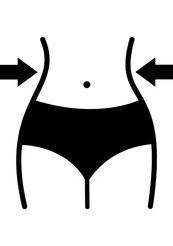Weight loss adventures can feel pretty overwhelming, especially for women who often run into challenges that aren’t always talked about enough. Trying to drop pounds isn’t just about willpower or motivation. There’s a whole mix of physical, mental, and even cultural barriers that pop up along the way. I’m going to share what I’ve learned about the tricky spots women face and give some tips that have made a real difference for many people. Whether you’re just starting or have been at it for a while, these insights may help you get a better handle on your own unique path.
Why Weight Loss Can Work Differently for Women
Biology doesn’t play favorites, and for women, weight loss often feels like it requires extra effort. Bodies naturally store fat differently thanks to hormones like estrogen, which can push fat to collect around the hips and thighs. Genetics are a factor—but it’s hormones that really mix things up, especially at certain life stages.
Modern research shows that women generally have less muscle mass than men and a slightly lower resting metabolic rate, meaning women burn fewer calories at rest. That’s just one reason why results on the scale can take more time to show up, even with the same effort as others in your household or gym.
There’s also more going on behind the scenes during times like pregnancy, perimenopause, or menopause, where metabolism can slow and cravings spike. For plenty of women, these hormone shifts make it feel like their body is playing by different rules every few years.
Another key factor is age. As women get older, muscle mass gradually decreases and body composition changes. This can tilt the balance toward more body fat and a slower metabolism, which means even healthy habits sometimes take longer to make a dent in weight. Digging into these overlapping influences, it’s clear that every woman’s path is unique—what works at one age or after a major life shift might not work the same way years later.
The Everyday Challenges Women Face With Weight Loss
When I talk with friends and clients about what gets in their way, a few common things always come up:
- Hormonal Fluctuations: Menstrual cycles can trigger cravings, water retention, and mood changes. That one week you’re nailing your meal plan, and the next, it can all feel off.
- Time Constraints: Juggling work, family, caregiving, or school leaves little room for meal prep or workout routines. Women still do most of the caretaking in many families, squeezing their own needs last.
- Social Pressure: Constant messages about how women “should” look can push people toward unsustainable diets, which often backfire and lead to a cycle of losing and regaining weight.
- Diet Culture Traps: Fad diets and detoxes get marketed to women everywhere. Quick fixes usually ignore long-term health and can mess up metabolism in the process.
These challenges aren’t about lack of discipline. They’re built into everyday life and shaped by expectations and biology.
On top of these, emotional eating caused by stress, anxiety, or low mood is a common culprit. Food often becomes a comfort, and that can add calories before you realize it. Additionally, women sometimes feel guilty spending time or focus on themselves, making it even harder to stick to healthy routines.
Strategies That Can Help Women Find Their Way With Weight Loss
Making progress with weight loss is easier with practical and realistic steps. I find these strategies help women manage the hurdles that often slow things down:
- Balanced Nutrition: Diets that cut out entire food groups rarely work long term. Focusing on plenty of whole foods—veggies, lean proteins, healthy fats, and whole grains—keeps meals satisfying and steady on energy.
- Strength Training: Adding muscle is super important for boosting metabolism. Women sometimes avoid heavier weights, but building muscle actually makes everyday life easier and helps burn more calories at rest.
- Accountability: Having an exercise buddy, a support group, or even a tracking app makes sticking to goals feel more doable. I’ve seen how much a friendly nudge can help, especially when motivation dips.
- Mindful Eating: Eating slowly and paying attention to hunger and fullness cues makes a surprising difference. It’s easy to eat more than you planned when stressed or distracted, but slowing down helps a lot.
- Managing Stress: Cortisol, the stress hormone, can push bodies to hang onto weight. Finding pockets for self-care, even if it’s just a few minutes a day, adds up over time.
Establishing a daily routine with regular mealtimes and physical activity can provide structure and make healthy choices feel more automatic. Some women find that journaling or tracking moods, cravings, and food intake helps spot patterns and triggers. And don’t forget sleep! Quality sleep makes it way easier to control cravings and energy dips. Prioritizing rest can really give your efforts a boost.
Common Myths and Misunderstandings
Popular ideas about women’s weight loss are everywhere, but some aren’t backed by real evidence. Here are a few to keep an eye on:
- “Eating Less Is Always Better:” Drastically cutting calories slows down metabolism and often leads to binges later. Sustainable weight loss is usually the result of modest calorie changes combined with activity.
- “Carbs are Bad for Women:” Unless prescribed by a doctor, cutting out carbs isn’t necessary. Quality carbs—like fruits, veggies, and whole grains—are important for health, energy, and mood.
- “You Need to Sweat a Lot for Results:” Consistency matters more than intensity. Even daily walks make a difference if they fit your life and you stick with them.
- “Supplements Can Melt Fat Away:” There’s no magic pill or powder. Some supplements can support health goals, but none can replace the basics of good nutrition and movement.
Keep an eye out for social media trends as well; flashy results don’t always have science backing them up. What matters most is a balanced approach that respects your body’s needs.
Life Stages That Change the Weight Loss Game
Weight loss isn’t a one-size-fits-all approach, especially as women move through different ages and stages. Here’s what changes:
Teen and Early Adulthood
Hormones are unpredictable, and body image can take a hit thanks to social comparisons. Setting healthy habits early, like focusing on strength, sleep, and balanced meals, can make things easier in the long run. Support from friends or family makes a big difference here.
Pregnancy and Postpartum
For women who have kids, weight can go up unexpectedly, and bouncing back isn’t always smooth. Breastfeeding, sleep deprivation, and time crunches are real hurdles. It’s better to focus on healing and self-kindness rather than rushing into tough diet or exercise plans.
Menopause and Beyond
Metabolism slows as estrogen levels fall, and it becomes easier to gain fat around the belly. Lifting weights and focusing on protein-rich meals can help counter these changes. Staying active and getting enough sleep become even more important. Including other wellness habits like meditation or gentle stretching can help address both physical and emotional health during this time.
Addressing Barriers: Practical Tips
Tackling obstacles head-on can keep things moving in the right direction. These tips have helped many women build momentum:
- Plan in Small Steps: Instead of massive changes, pick one area (like breakfast or bedtime) and try a new habit. Tiny changes stick better over time.
- Meal Prep for Busy Weeks: Having chopped veggies, cooked grains, or easy protein options on hand makes healthy meals fast and low-stress.
- Track Progress Beyond the Scale: Measurements, the fit of your clothes, or how energized you feel are just as valuable as numbers on the scale.
- Celebrate Wins: Hit a new personal best in fitness or cooked at home all week? Treat yourself—just not always with food. New workout clothes, a walk in the park, or a relaxing bath can be motivators.
- Mix Up Your Movement: If walking or running gets dull, try dance classes, yoga, cycling, or even home workout videos. A little variety keeps things interesting and helps work different muscle groups.
Don’t hesitate to ask for support from friends, family, or even a professional. Just communicating your goals can keep you focused, and you might get extra encouragement when you need it most.
Real-World Examples: Everyday Women Tackling Obstacles
Personal stories bring things to life, so I’m sharing a couple of examples I’ve heard lately. One friend set a goal to do ten minutes of stretching or walking every day before her kids woke up, and saw her energy and mood improve within weeks. Another created a recipe club with coworkers where they’d trade healthy slowcooker recipes, just to keep things interesting with less effort.
A neighbor of mine found success by keeping a small food journal—not just to track calories, but to see how different meals affected her mood and energy. Over time, she noticed patterns that helped her adjust snacks or meal timing. These tweaks didn’t lead to overnight transformations, but both women felt encouraged by small, steady wins that fit their lives. It’s those day-to-day adjustments and patience that add up to bigger progress down the line.
Frequently Asked Questions
Here are a few questions I get a lot when talking about women’s weight loss challenges:
Question: Why does my weight fluctuate so much during my period?
Answer: Hormonal shifts lead to water retention, cravings, and sometimes a slower digestive system. These changes are normal and usually settle after your period passes.
Question: How do I handle cravings at night?
Answer: Make sure you’re not skipping meals during the day. This can make nighttime cravings worse. Sometimes a snack with protein, fiber, and a little fat will take the edge off (like yogurt with berries or a handful of nuts).
Question: Can I still lose weight if I don’t have an hour a day to exercise?
Answer: Consistency matters more than the clock. Even short, frequent bursts of movement, like climbing stairs or brisk walks, add up over time and absolutely count.
Question: What can I do when I hit a plateau?
Answer: Plateaus are common and can be frustrating, but they’re also normal. Try mixing in some new exercises, change up your meal plan, or check your sleep and stress levels. Sometimes your body just needs a little change to get things moving again.
Bottom Line: Support and Personalization Matter Most
No single approach works for all women. The most effective changes are built around your own preferences, responsibilities, and unique situation. If you find yourself struggling, reaching out for support from a coach, a medical provider, or a supportive community can make a big difference. Being patient with your progress, recognizing small victories, and taking a flexible approach are really important on the way to a healthier relationship with food, fitness, and your body.

